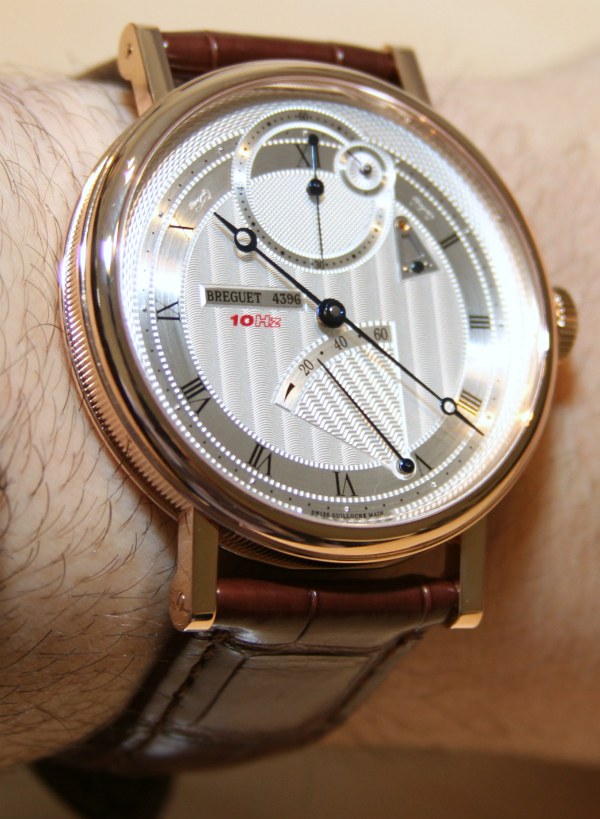show me a single discussion where a mechanical watch fan (like me) claims they are measurably better.
after this claim, i am sorry to say the rest of your argument is based on that logical fallacy.
High beat rates are simply easier to adjust for positions, because the interference with balance motion caused by dynamics affect a smaller percentage of the oscillations. There are disadvantages in terms of durability, but my 1968 Zodiac SST and my ~1970 Ebel Chronometer both beat at 5 Hz (36000 bph) and are still going strong. I have a Zenith Captain from 2010 and an Ebel Chronograph from 1986 that both use high-beat Zenith movements, and they also run great. There is a measurable explanation, and exacting the best possible operation from an obsolete technology is interesting and valuable for those relatively few who care.
I completely agree that mechanical watches are the archetype for eschewing measurements in favor of aesthetics (and I'm thinking of aesthetics broadly here in terms of artistic taste, not just outward visual appearance, but
de gustibus non est disputandum). That said, just as with playing vinyl records, there's value for those few who care to making them work as well as possible within the context of their obsolescence. And there are some advantages: Lack of dependence on batteries and electronics and gradual rather than sudden failure as a result of neglect (although I don't know anyone, ever, who prophylactically replaces batteries to prevent sudden failure) and no dependence on software. My most accurate mechanical watch is a Ulysse Nardin Marine Chronometer, which uses a hairspring carved from a silicon wafer using a laser--certainly an advanced technology in its own right. It's as accurate as a typical quartz watch, but that makes the point--it takes that level of execution to merely match what a $5 quartz movement can do routinely. Yet I value the thought and design execution that led to that result, and aesthetically it's a beautiful watch with a beautifully crafted movement.
If we think of it in terms of requirements and user needs, most people don't need a watch at all and the use case for wearing one is to be able to see the time without having to dig for a separate device. Very few people have any use case at all for real accuracy in a watch. The main use case for "nice" watches is aesthetic, in the same way that people might wear other jewelry or drive expensive cars as a matter of aesthetic or artistic expression. Sure, it may also be a display of wealth for its own sake, but who among us is completely above that? These are the same influences that may drive someone to own and use a turntable for vinyl records even if they don't already have a library of vinyl records.
It could be nostalgic, or it could be a high-touch reaction to high tech. It could be rebelling against yet another battery-powered piece of electronica that has to be recharged every day or two, or suddenly stop working because some pimply faced adolescent in Cupertino (or wherever) decided that they know better my needs than I do, or because some other pimply faced adolescent IT guy thinks he's saving the world from cyber attack by wiping my personal phone just because I didn't update the operating system far enough quickly enough for using the walled-off-anyway government email app. (If it seems like I'm grousing about that one, you earn no bonus points.)
I've never seen a mechanical watch fan claim that a mechanical watch is a
more accurate timekeeper than any common quartz watch. But I do not agree that this is the only measurement that matters, or that it is even the most important measurement to most watch owners--and I include owners of watches antithetical to many mechanical watch enthusiasts like the Apple Watch. I certainly do note that most mechanical watch owners do indeed claim that they are
better than common quartz watches for a range of reasons unrelated to timekeeping accuracy.
The issue with measurements is when we give them moral authority beyond their technical meaning, and both the wristwatch and audio hobbies highlight that. Many who claim that mechanical watches are
bad do so because they think they represent conspicuous consumption--they are making a social rather than a technical argument, or stated differently a ethical argument that the things they value are the only things that matter. Many who eschew measurements in audio use that as the basis for justifying vastly expensive equipment and tweaks, and when we laugh at their self-delusion we are making a moral rather than a technical argument. We believe that the delusion they seem to fall under is morally bad rather than merely silly--and it may be in some cases where the purveyors of these things argue in bad faith against their own technical understanding and beliefs just to promote sales. We should be careful about separating our moral judgements from our technical judgements.
I agree that audio enthusiasts at the high end often believe the schtick, while watch enthusiasts at the high end more clearly distinguish their aesthetic and social intentions from mere timekeeping accuracy. (Neither groups clearly distinguish between aesthetic and social intentions, but that makes them members of the human race.)
Rick "much ado about nothing" Denney




